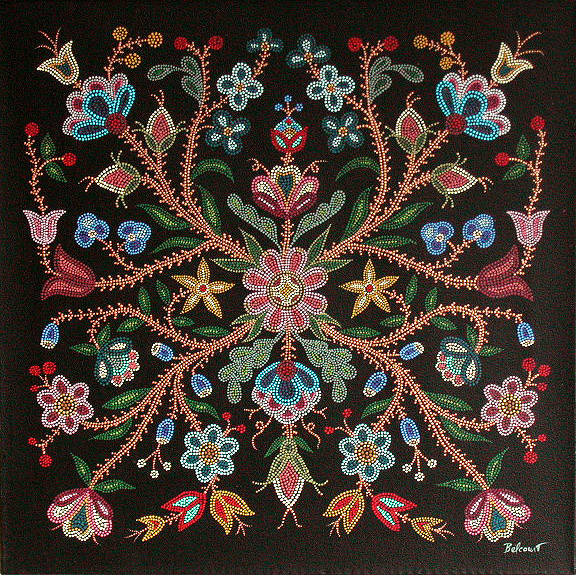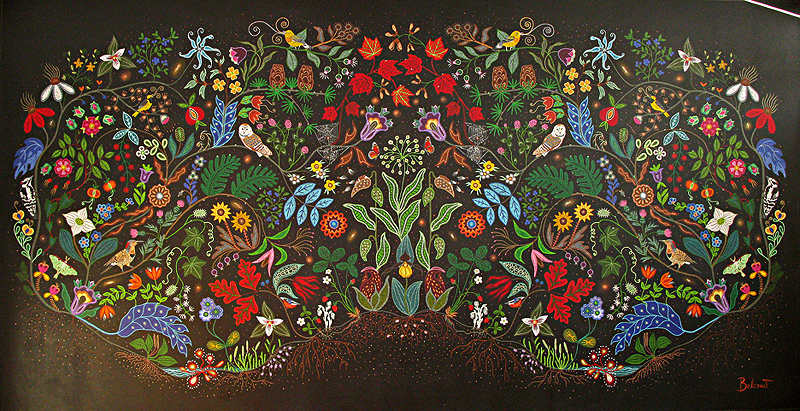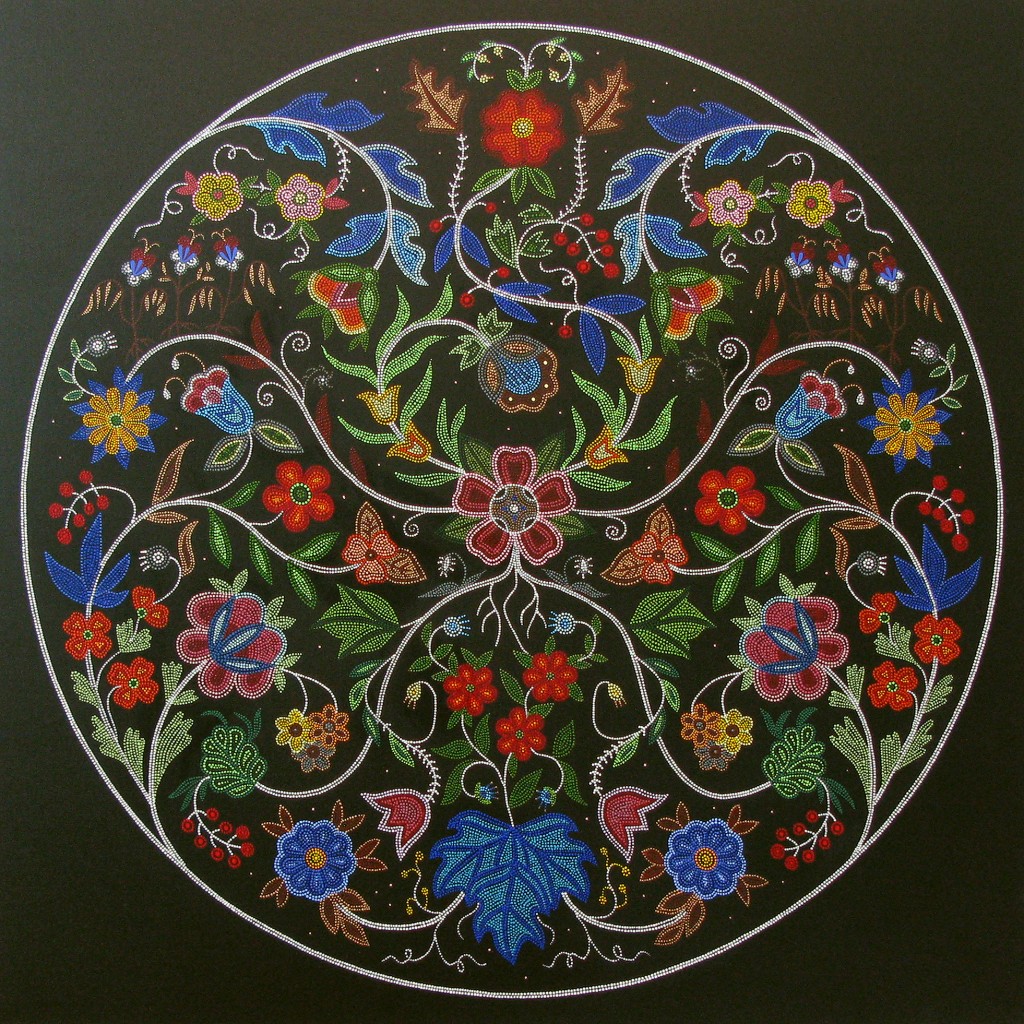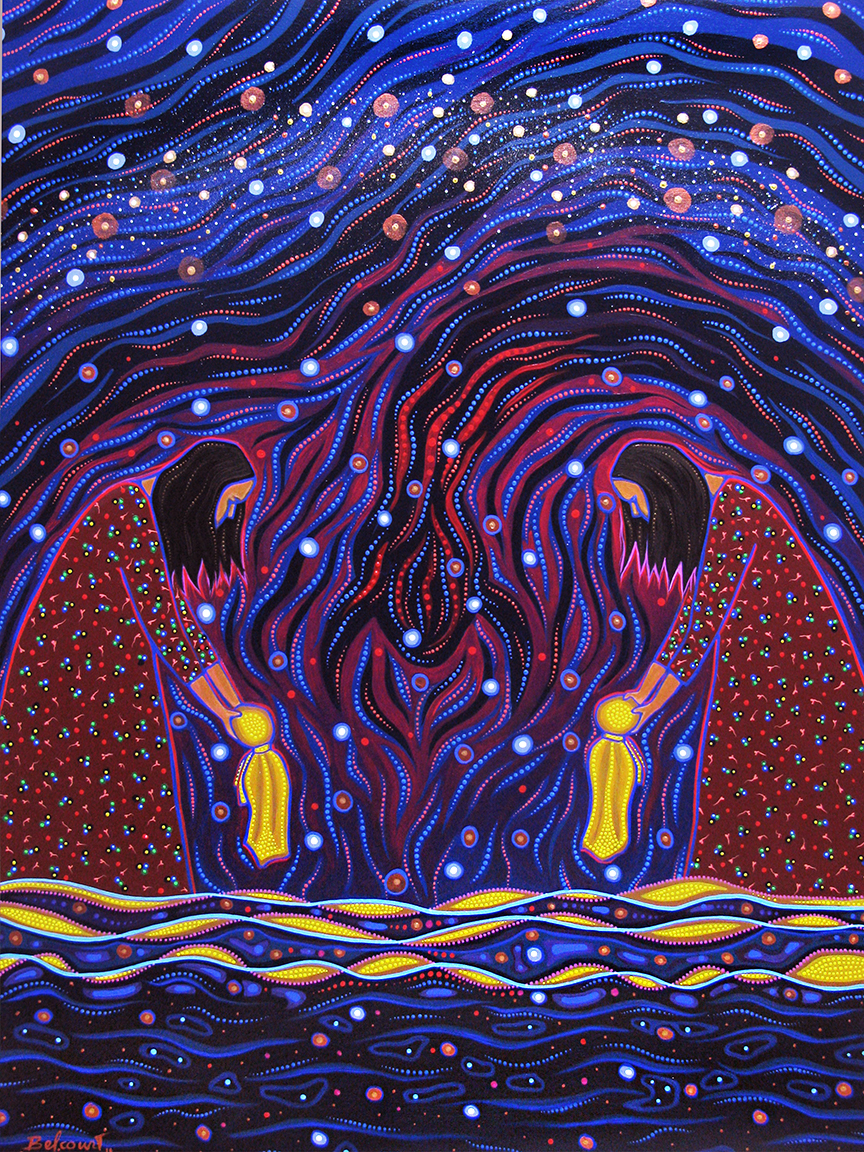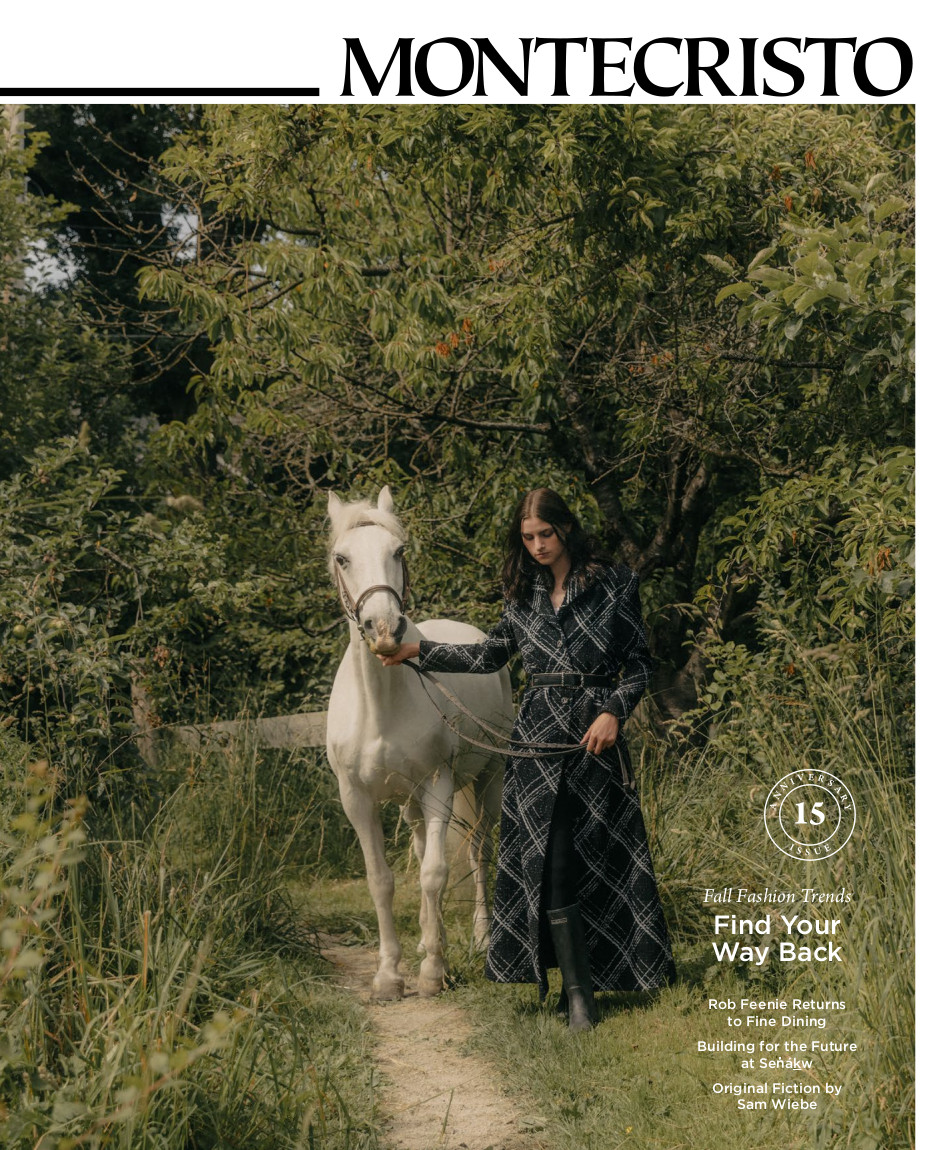In Christi Belcourt’s lush and colourful painting, Water Song, somewhere in the realm of 250,000 dots create a moving canvas of plants, animals, insects, and water droplets weaving lyrically around each other. The bead-like dots that are frequent in her art reference the traditional beadwork and quillwork of Belcourt’s Métis culture, and in this particular piece they come together to create a swirling and majestic ode to nature.
The beauty of Water Song, which hangs in the National Gallery of Canada in Ottawa, caught the attention of some very interesting people: Valentino designers Maria Grazia Chiuri and Pierpaolo Piccioli (though it must be noted that the former has since left the brand for Dior). The painting was so inspiring to the duo that they reached out to Belcourt about putting a form of it on their designs. She agreed, and the beautiful results can be found on a few dresses as part of Valentino’s Resort 2016 collection. “A lot of the beadwork tradition and imagery that I work with was originally put on items that were for use of some sort, including clothing,” Belcourt says over the phone from her home in Espanola, Ontario (though she was born in Alberta). “And then in my painting practise, I took that imagery and practice of beadwork and transferred it into paint and put it onto canvas. So then to take this artwork that was done in paint and put it back onto clothing was almost like it had come full circle. That was exciting.”
Though Belcourt does not spend much time thinking about her own wardrobe, she has an interest in beautiful clothing and fabrics, and was happy to work with Valentino after confirming that the brand works hard to source environmentally-friendly textiles. “I asked them where they sourced their materials,” she recalls. “That was important because I feel we have a moral obligation to make sure that where we purchase our things from, and where we source materials from, is not damaging the environment or the health of other people or animals halfway across the world.”
The planet’s health is a common thread through much of the artist’s work. Water Song is about the importance of water and the wildlife it cultivates, but many of Belcourt’s other pieces reference her passion for the environment. “I want all human beings to feel connected to the earth, because ultimately we are all of this earth, and in becoming connected to the earth and to the waters, we are more likely to want to protect those for future generations,” she says. “It is a form of expression of who I am that also, at its fundamental core, relates to all of us as human beings, who are living on this planet with other beings who deserve to have a clean environment.” Belcourt is also very passionate about Indigenous issues, as reflected in pieces such as Giniigaaniimenaaning, a stained-glass window in Parliament that commemorates the survivors of residential schools, and Walking With Our Sisters, a collaborative travelling project that honours missing and murdered First Nations women.
Belcourt is also spending a lot of time these days with Onaman Collective, which she started with fellow artists Isaac Murdoch and Erin Marie Konsmo. Together they work on various arts and community-building projects surrounding Indigenous culture and the protection of the earth. “We just want to be part of the work that everybody’s doing on the ground in the communities,” says Belcourt. “There’s a movement of Indigenous peoples happening across North America—there are really beautiful positive acts of reclamation that are happening. The focus is not as much on reconciliation, it is not about the relationship between Indigenous people and non-Indigenous people—it’s more looking at what was stolen or lost or taken from the people during the process of residential schools, and now what do we do to rebuild ourselves, to rebuild our communities, bring our languages back.” When asked about reconciliation, she frankly states that her work doesn’t deal with the concept at all because she doesn’t think it is conceivable. “Without the restoration of land, which is the basis of all of the issues that we have, I don’t actually believe that reconciliation is possible,” Belcourt explains. “I think that everything that will be tried is amounting to a Band-Aid solution, and that we will continue to have all of the issues that we’re facing, because land is at the core and heart and centre of who we are as people, and who we are as spiritual beings, and who our ancestors were, and who our future generations will need to be. Without land, how can it be possible? It’s like somebody taking over your house and kicking you out, and then inviting you over for tea.”
As such, the work being done inside and between Indigenous communities is what Belcourt considers to be the most significant form of progress. Through the collective, she has helped organize language camps for First Nations youth; she has facilitated sign-making for water protection advocates; she has sold her own beautiful art to raise money for her initiatives. She has shown that while it might not take the shape we thought it would, a prosperous future can be built.
More from our Arts section.

